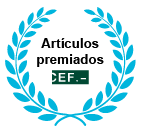A 360˚ vision of marketing. Comparative analysis of two digital content strategies in the cosmetics industry
DOI:
https://doi.org/10.51302/marketing.2022.852Keywords:
360º marketing, digitization, web presence, e-commerce, positioning, social mediaAbstract
Communication and digital marketing in the cosmetics sector have been transforming into an increasingly digital communication, due to changes in consumer behavior, the emergence and involvement of social networks as new ways of communicating, the development of TICs and the consolidation of the internet. Digitalization is no longer an option but an obligation, as it is presented as an effective proposal thanks to all the opportunities it offers. In a society completely immersed in interconnected digital devices, digital content and web presence make their way to reach users through different strategies and approaches that have been compiled in this work. A 360º digital marketing vision offers us to visualize the most important components that actively participate in a digital marketing plan in relation to the cosmetic sector, adapting to the beauty consumer behavior on the internet. On the other hand, it is intended to understand how marketing results can be subjected to a comprehensive measurement process, thanks to digital analytics, which allows us to understand them and then propose improvements. For its development, a literature review has been carried out on the cosmetics sector and the most relevant aspects that actively participate in a digital plan with the aim of compiling them and clarifying different concepts. Finally, in terms of web analytics, a case study will be carried out through different tools, performing an analysis of two brands with web presence.
Downloads
References
Arbildi, I. (2005). Posicionamiento en buscadores: Una metodología práctica de optimización de sitios web. http://profesionaldelainformacion.com/contenidos/2005/marzo/3.pdf
Cortés, V. S. (2011). Marketing digital: como herramienta de negocios para PyMES [Tesis de Ingeniería]. Universidad de Chile. https://repositorio.uchile.cl/handle/2250/116571
Geysser, W. (2022) El Estado del Marketing de Influencers 2021: Informe Benchmark. https://influencermarketinghub.com/es/informe-bechmark-marketing-de-influencers-2019/
Gutiérrez-Rubí, A. (2014) 6 rasgos clave de los millennials, los nuevos consumidores. Forbes. https://www.forbes.com.mx/6-rasgos-clave-de-los-millennials-los-nuevos-consumidores/
González, Z., García, I. y Mcdonald, L. (2016) Bloggers cómo influenciadores de consumo, referencia y opinión en el sector de productos de cosmética femenina. RIIT.
Liberos, E. (2011). El libro del comercio electrónico. (2.ª ed.). ESIC.
Macía F. (2015). Marketing on-line 2.0. Cómo atraer y fidelizar clientes en internet. Anaya Multimedia.
Marqués, V. (2018). MKT digital 360 (2.ª ed.). Conjuntura actual.
Monteverde, P. (2018). Las marcas de cosmética en redes sociales en España y LATAM. Hubspot.
Muñoz-Domínguez, G. y Díaz-Soloaga, P. (2020). Co-creación, contenido y comunidad: nuevas bases del engagement digital en marcas de cosmética. En Comunicación y diversidad [comunicación]. VII Congreso Internacional de la Asociación Española de Investigación de la Comunicación (AE-IC). Valencia, España, 28-30 de octubre, pp. 319-330. http://profesionaldelainformacion.com/documentos/libro_ae-ic/munoz_diaz.pdf
Orús, A. (2022). Volumen de negocio del comercio electrónico dentro de España de perfumería, cosméticos y artículos de tocador del primer trimestre de 2015 al cuarto trimestre de 2020. Statista. https://es.statista.com/estadisticas/1034872/facturacion-comercio-electronico-por-compras-en-perfumeria-cosmeticos-y-articulos-de-tocador-dentro-de-espana/
Stanpa. (2020). Memoria anual. 2019. Stanpa
Downloads
Published
How to Cite
Issue
Section
License
Copyright (c) 2022 Estefania de Felipe Dorado; Estíbaliz Pérez Asperilla

This work is licensed under a Creative Commons Attribution-NonCommercial-NoDerivatives 4.0 International License.





















